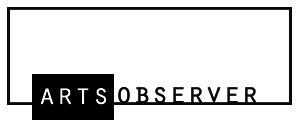
“World Stage” is on view through July 9.
NEW YORK—Kehinde Wiley thought he knew a decent amount about Israel and had a healthy understanding of what to expect when he arrived there. He anticipated finding Israel “tense.” But his experience was much more nuanced. Yes, there were police with bomb sniffing dogs and mirrored devices to scan the undercarriage of cars for explosive devices, but like most metropolitan regions, the artist says he encountered people who were living their lives interacting with men and women from a range of ethnic and cultural backgrounds. He also met plenty of Jews who were open to a two-state solution to the Israeli-Palestinian conflict.
Known for his large-scale, regal portraits of young men posed against elaborately detailed patterns that have cultural and historic references, Wiley traveled to Israel to work on a project that would eventually become an exhibit at the Jewish Museum. The artist recounted his experience in Israel last night at the museum, where his new show “World Stage: Israel” opened on March 9. The artist discussed the exhibit which features portraits of Ethiopian and native-born Jews and Arab Israelis with Lola Ogunnaike, a culture reporter and Today show contributor, and signed copies of the exhibit catalogue afterward.

Above, Wiley was interviewed by Lola Ogunnaike, a culture reporter who is also a close friend of the artist. Top of page, At left, “Leviathan Zodiac,” 2011 (oil and gold enamel on canvas) and center, “Alios Itzhak.”
A Global Project
The Israel series is a part of a global project Wiley is pursuing that already includes Brazil, China, India and Sri Lanka, Nigeria and Senegal. The artist explains his intent in a video about the exhibit: “Each location that I choose in the ‘World Stage’ comes about because I wanted to mine where the world is right now and chart the presence of black and brown people throughout the world.”
All of these countries are very much a part of the global conversation, emerging economically and culturally. In Israel, Wiley was drawn to the wide diaspora, including the history of Ethiopian Jews.
He traveled to Jerusalem, Tel Aviv and Lod with four assistants, exploring malls, clubs and sporting events, looking for subjects to pose for the project. He also met people in private homes and spent time with Kalkidan Mashasha, a hip hop and reggae artist, and his crew. Mashasha is Ethiopian-Jewish and his portrait is included in the exhibit.

The Artist’s Process
Wiley spoke at length about his process—how he finds his subjects, how he explains his ouevre. The artist works from photographs, sometimes adding or subtracting elements from the image when he paints. The young men pose for his paintings are compensated for their time.
He seeks young men with a certain “swag,” he says, meaning a kind of distinction. When he approaches someone that he would like immortalize, globally, he estimates that 60 percent of the time they say “no.” He laughingly says having “beautiful women around him” working as assistants helps and that those who agree to participate commonly ask “Do I have to take my shirt off?” and “Will I get paid?”
He says “each country has a specific response.” While working in Israel, he learned the rhythm of the locales, convincing a club owner to let him set up a little studio in a back room where he could photograph potential subjects.
In Brazil, he says he “had to be discreet,” which was a challenge as his small group navigated the favelas with a video camera and a guard armed with an AK-47. Eventually someone offered their grandmother’s house, where Wiley set up shop. After awhile, word spread around the community that “a crazy American” was “paying hundreds of dollars to take your photo.” Soon he says a qeue was snaking through the favelas and the young men even began playing to type based on the persona they thought Wiley was seeking.

“Alios Itzhak,” 2011 (oil and enamel on canvas).
Collaboration with Jewish Museum
A ceremonial papercut led Wiley to the the Jewish Museum. Early on, he was inspired by the image and eventually learned the piece was a part of the museum’s collection. The intricate details of the ornamental papercut are replicated in the background of “Alios Itzhakthe,” the exhibit’s signature portrait which depicts an Ethiopian Jewish Israeli man. The museum purchased the painting and a mural of the image was painted on the side of a building on Houston Street in Soho.
“World Stage: Israel” is on view from March 9 to July 29, 2012. The exhibit includes 14 portraits, as well as the paper cut and other ceremonial works from the museum’s collection.

“Abed Al Ashe and Chaled El Awari,” 2011 (oil and gold enamel on canvas).

Wiley signed copies of the exhibition catalogue after the discussion.
Discovering Art
After the discussion, Wiley answered to a few audience questions and signed books. An arts educator (not pictured) who teaches mostly African American children in Harlem and the Bronx asked if he had any words of encouragement for her students. Initially unsure how to respond, Wiley eventually recounted his own story emphasizing the importance of a budding artists finding and taking advantage of opportunities to focus on their passions. Wiley (a twin) is one of six children who was raised by a resourceful single mother in South Central Los Angeles. He says she enrolled him in a free painting program and it allowed him to “disappear for an hour on Saturday” and get away from the violence overwhelming his neighborhood. It was such a remarkable program, that he says was able to travel to Russia when he was 12 and study art outside of Leningrad, for free.
All photos by Arts Observer



